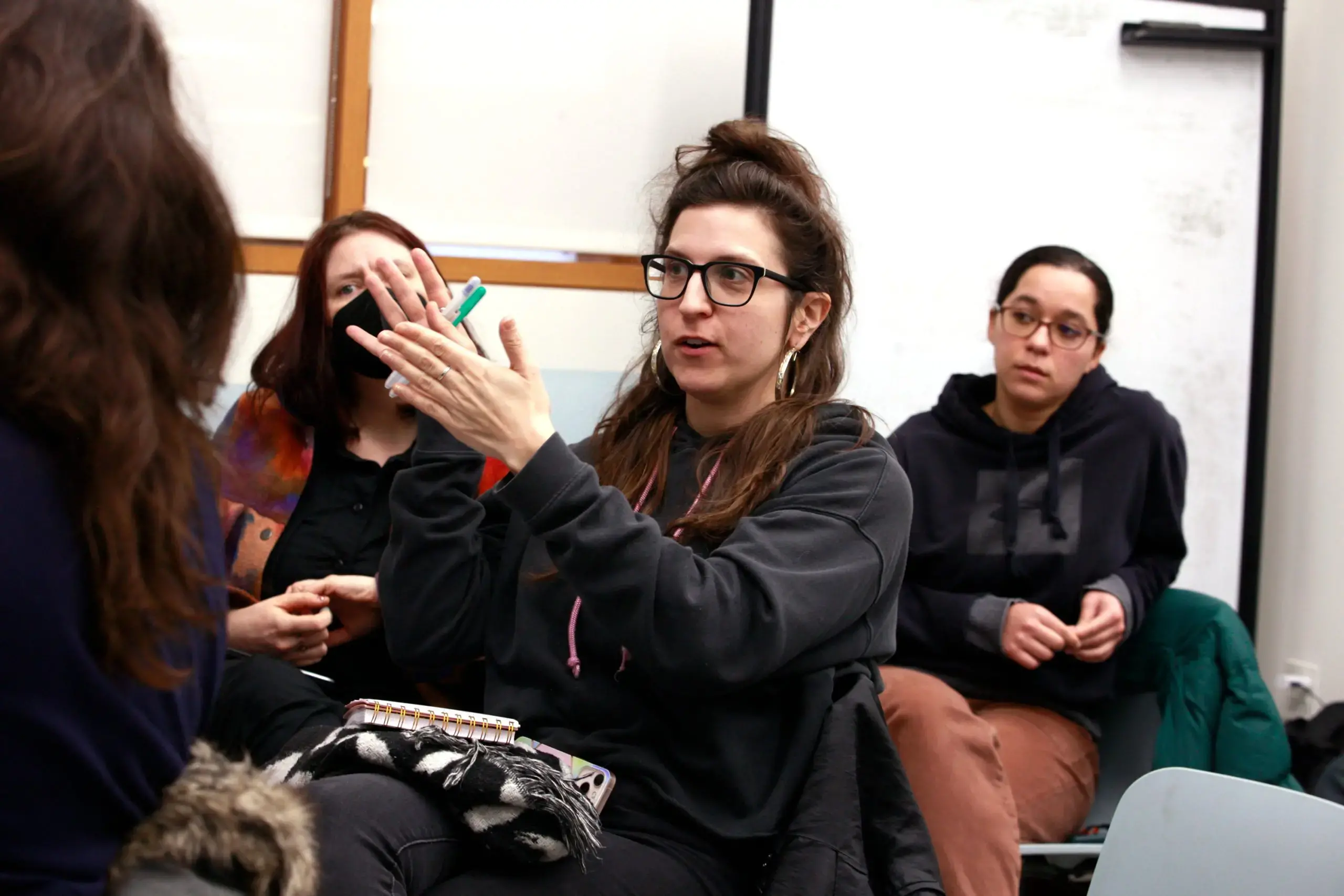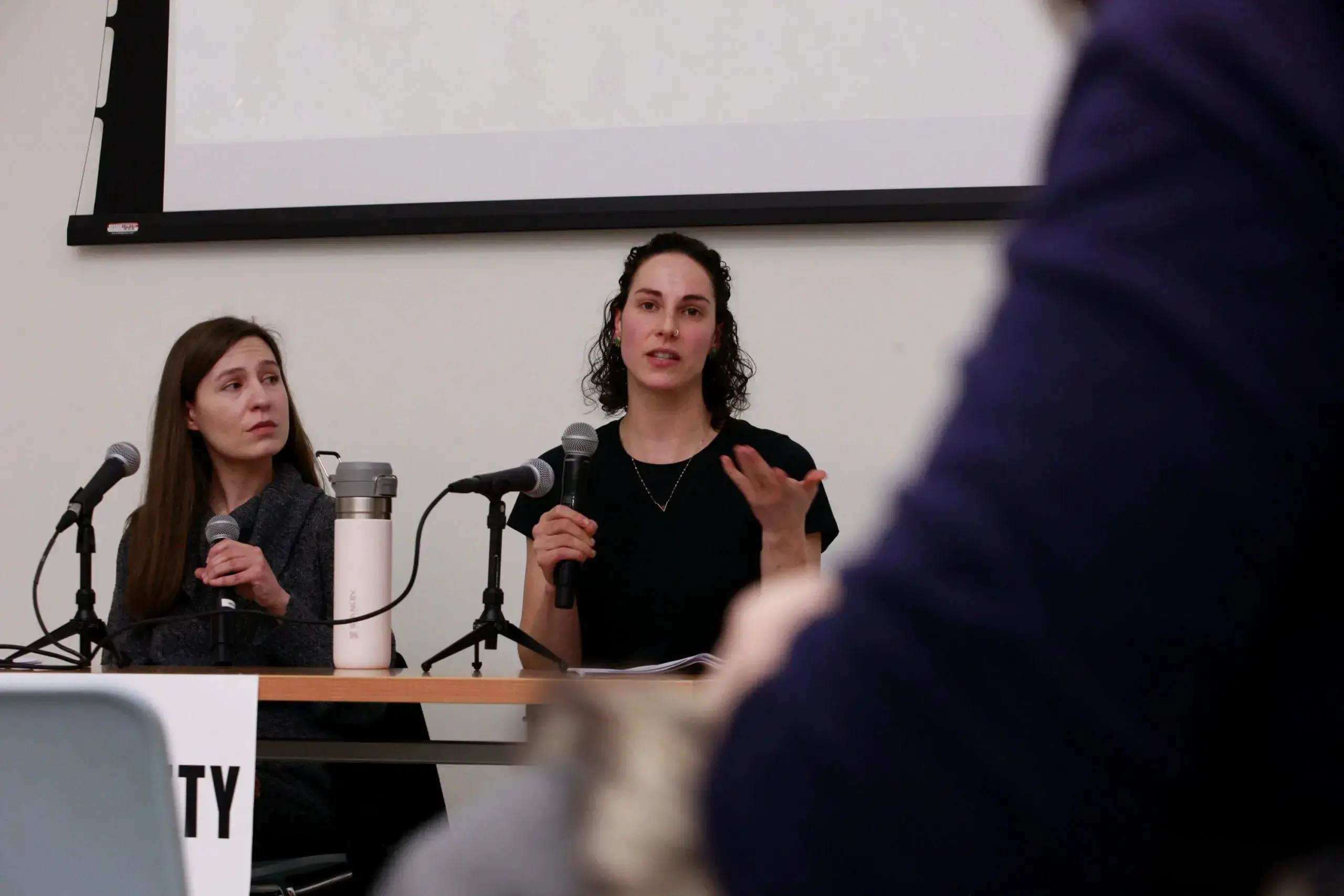— By THE CITY Staff
Editor's Note: This report was originally published in THE CITY. Read the story here.

THE CITY met with New Yorkers at the Brooklyn Public Library for a conversation about what a changing environment means for NYC’s four federal Superfund sites as part of the Hazard NYC project.
It was a full house to talk about some of New York City’s most toxic places.
THE CITY newsroom hosted a conversation about Hazard NYC, a multimedia project exploring the city’s four Superfund sites and the effects of climate change upon them.
The talk, last week at the Brooklyn Public Library, featured THE CITY’s senior reporter Samantha Maldonado and independent journalist Jordan Gass-Pooré who presented an overview of the project and gave nearly 50 attendees a peek behind the scenes of their reporting process.
Superfund sites are areas where contamination poses a significant risk to human and environmental health, so the federal Environmental Protection Agency is overseeing the cleanup process.
New York City’s density means New Yorkers find themselves in close proximity to these sites, all in Brooklyn or its border with Queens: Newtown Creek, the Gowanus Canal, the Meeker Avenue Plume and the Wolff-Alport Chemical Company. The effects of climate change could bring contamination nearer to people and possibly make the sites even dirtier.
Flooding that’s expected to become worse and more frequent means “contamination can come out of those areas and spread more and more widely,” Maldonado said. “It also can mean different kinds of chemicals and pollutants … can get into those areas, into the water, which can really affect the way that the EPA approaches a cleanup.”

The journalists described the different people they spoke to in their reporting, including longtime community members who have fought for the sites to be cleaned up, climate scientists, toxicologists, local business owners and real estate developers. And they spoke about seeing the sites in a new way as part of the reporting process.
“This was my first time actually being in the water,” said Gass-Pooré, who toured Newtown Creek from a boat. “Different parts smelled different. The water was different colors in different parts because of the oxygen level. I saw a lot of wildlife. It was surprising.”
Audience members — many of whom said they live, work and spend time near the Superfund sites — shared their own experiences and asked questions. Those included:
How worried should people be about the health risks the contaminants at the sites present?
Maldonado explained that risk varied. In the reporting process, she found sources who downplayed the risks and others who emphasized them for different reasons. Health experts said risks depend on the level and duration of an individual’s exposure to contaminants, as well as personal factors, such as genetic history and habits like smoking.
Why are all the federal Superfund sites in Brooklyn? (Note: the Wolff-Alport Chemical Company site is in Ridgewood on the Queens border.)
An audience member pointed out it can take time, energy and political will to campaign for the EPA to place a site into its Superfund program, and not every community has the resources to engage that way. Maldonado noted there are also contaminated sites in the state Superfund program throughout the boroughs, though the Hazard NYC reporting project focused on federal sites. Gass-Pooré also mentioned the city and state brownfield programs, which provide developers tax credits for cleaning and redeveloping contaminated sites.
What happens if there’s recontamination after the EPA cleans up a site?
The reporters said the EPA monitors the remedies it puts in place. If there’s recontamination, the EPA knows it has to do more work. The reporters provided ways to take action to learn more about Superfund sites. The audience contributed ideas, too. Recommendations include:
- Joining a Community Advisory Group for the Meeker Avenue Plume, the Gowanus Canal or Newtown Creek.
- Signing up for site updates from the EPA.
- Paddling in Newtown Creek with the North Brooklyn Community Boathouse or in the Gowanus Canal with the Gowanus Dredgers Canoe Club.
- Going birding and paying attention to wildlife near the sites.
- Signing up for vapor intrusion testing with the EPA if you live near the Meeker Avenue Plume, or signing up for air-sampling tests with the state if you live near the Gowanus Canal.
For more, read the four digital stories and listen to the Hazard NYC podcasts. Those can all be found here.
Thank you to the Pulitzer Center for its support of the Open Newsroom and for the project at large, which is part of the Connected Coastlines initiative. Hazard NYC was also made possible by support from the Fund for Investigative Journalism and produced in partnership with the McGraw Center for Business Journalism at the CUNY Graduate School of Journalism. Hazard NYC is sponsored in part by Brooklyn SolarWorks and Newlab.



